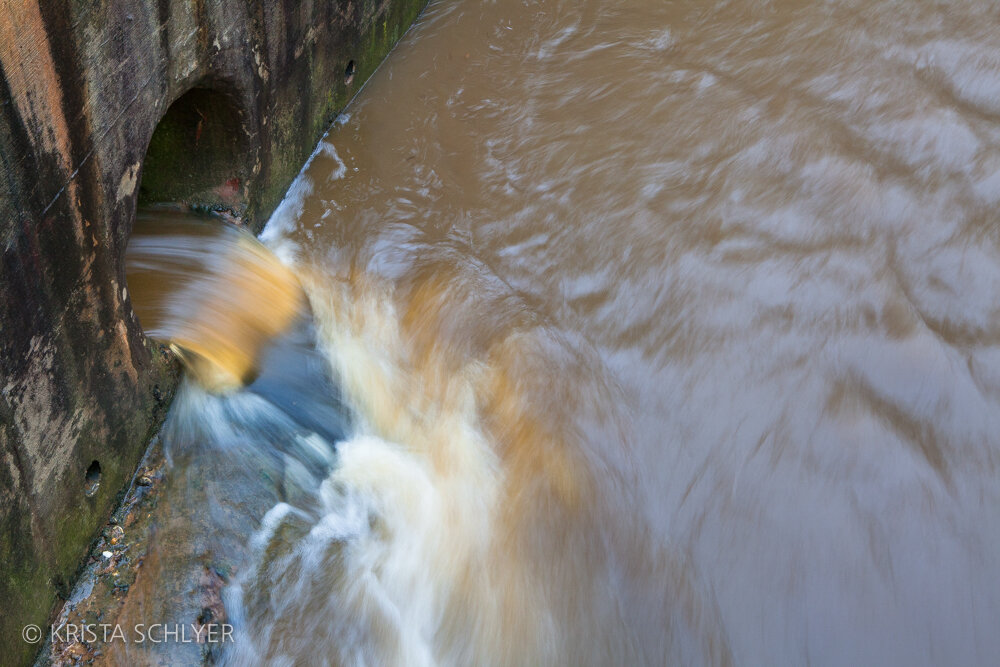
Stormwater & Sewage Management
The District of Columbia, like most ultra-urban areas, is highly impervious, meaning that stormwater can’t readily infiltrate into the open soil. This runoff places a burden on sewer systems and degrades aquatic resources when it is not managed adequately. Unmanaged stormwater runoff overloads the capacity of streams and storm sewers and is responsible for increased combined sewer overflow events and adverse downstream impacts, such as flash flooding, channel erosion, surface and groundwater pollution, and habitat degradation.
The District is served by two sewer systems; the Municipal Separate Storm Sewer System (MS4) and the Combined Sewer System (CSS). The MS4 receives runoff from about 2/3 of the District and collects and conveys stormwater from streets, sidewalks, and rooftops to nearby waterways through stormwater sewers and outfalls. The CSS is served 1/3 of the District and carries both stormwater and domestic sewage.
Map of DC’s Sewer System
Reducing Stormwater Pollution in the MS4
Every year, the District Department of Energy and Environment (DOEE) submits an Annual MS4 Report to EPA, documenting the activities that fulfill the requirements of the District’s MS4 Permit. These activities include, for example, implementation of stormwater management practices and water quality monitoring. Click here to review current and past Annual MS4 Reports. DOEE’s 2023 MS4 report Story Map can be viewed below or at this link.
Clean Rivers Tunnels Project
The combined sewer system is designed so that during dry weather all the flow in the combined sewers will go to the Blue Plains Regional Wastewater Treatment Plant (Blue Plains), where it is treated before being released. During periods of heavy rainfall, the capacity of a combined sewer may be exceeded. When this occurs, the combined sewer system is designed to let the excess flow, which is a mixture of stormwater and sanitary wastes, be discharged directly into the District's rivers and tributaries. This excess flow is called combined sewer overflow (CSO). Large tunnels, part of the Clean Rivers Project, are under construction to prevent overflow from the CSS and ensure that stormwater is treated at the Blue Plains wastewater treatment plant before it is discharged.
The Clean Rivers Project is DC Water's ongoing program to reduce combined sewer overflows (CSO's) into the District's waterways - the Anacostia and Potomac Rivers and Rock Creek. The project is a massive infrastructure and support program designed to capture and clean wastewater during rainfalls before it ever reaches our rivers.
More information an updates on the project status can be found on here: https://dcwater.com/cleanrivers

